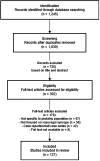Advances in diagnosis, management, and long-term outcomes of pediatric vasovagal syncope: a comprehensive review
- PMID: 40351605
- PMCID: PMC12062076
- DOI: 10.3389/fcvm.2025.1481749
Advances in diagnosis, management, and long-term outcomes of pediatric vasovagal syncope: a comprehensive review
Abstract
Vasovagal syncope (VVS) is the most common cause of transient loss of consciousness in children and adolescents, accounting for 60%-80% of syncope cases. This review synthesizes current evidence on pediatric VVS, focusing on advances in diagnosis, management, and long-term outcomes. Through a comprehensive literature search of studies published between 2001 and 2024, we analyzed epidemiological patterns, pathophysiological mechanisms, diagnostic approaches, management strategies, and prognostic factors. Recent diagnostic advances include implantable loop recorders and smartphone applications, which have improved diagnostic accuracy. Management has evolved toward individualized approaches, emphasizing non-pharmacological interventions (hydration, salt supplementation, physical counterpressure maneuvers) as first-line treatment, with medications such as midodrine and fludrocortisone showing variable efficacy in refractory cases. Long-term studies indicate that while most children experience improvement over time, 33%-50% have recurrent episodes within three years, with factors such as lower mean arterial pressure, higher urine specific gravity, younger age, family history of syncope, and lower body mass index associated with increased recurrence risk. Though generally benign, VVS can significantly impact quality of life and carries substantial psychosocial consequences. Future research should focus on developing predictive models for recurrence risk and exploring personalized treatment approaches to improve outcomes.
Keywords: diagnosis; management; outcomes; pediatric; vasovagal syncope.
© 2025 Zhu, Bian and Lv.
Conflict of interest statement
The authors declare that the research was conducted in the absence of any commercial or financial relationships that could be construed as a potential conflict of interest.
Figures
Similar articles
-
Treatment of vasovagal syncope: an update.Curr Treat Options Cardiovasc Med. 2010 Oct;12(5):472-88. doi: 10.1007/s11936-010-0087-4. Curr Treat Options Cardiovasc Med. 2010. PMID: 20842568
-
Current approach to the treatment of vasovagal syncope in adults.Intern Emerg Med. 2023 Jan;18(1):23-30. doi: 10.1007/s11739-022-03102-w. Epub 2022 Sep 18. Intern Emerg Med. 2023. PMID: 36117230 Review.
-
Vasovagal Syncope: A Review of Current and Emerging Therapies for a Common Cardiology Condition.J Tehran Heart Cent. 2024 Jan;19(1):1-5. doi: 10.18502/jthc.v19i1.15529. J Tehran Heart Cent. 2024. PMID: 39712356 Free PMC article.
-
The predictive value of urine specific gravity in the diagnosis of vasovagal syncope in children and adolescents.Ital J Pediatr. 2021 Apr 17;47(1):93. doi: 10.1186/s13052-021-01043-2. Ital J Pediatr. 2021. PMID: 33865429 Free PMC article.
-
Diagnostic and therapeutic approach to cardioinhibitory reflex syncope: A complex and controversial issue.Rev Port Cardiol (Engl Ed). 2019 Sep;38(9):661-673. doi: 10.1016/j.repc.2018.11.007. Epub 2019 Dec 6. Rev Port Cardiol (Engl Ed). 2019. PMID: 31813672 Review. English, Portuguese.
Cited by
-
Features of Clinical Manifestations and Heart Rate Variability in Children with Malignant Vasovagal Syncope.Children (Basel). 2025 May 15;12(5):636. doi: 10.3390/children12050636. Children (Basel). 2025. PMID: 40426815 Free PMC article.
References
-
- Shen WK, Sheldon RS, Benditt DG, Cohen MI, Forman DE, Goldberger ZD, et al. 2017 ACC/AHA/HRS guideline for the evaluation and management of patients with syncope: a report of the American College of Cardiology/American Heart Association task force on clinical practice guidelines and the heart rhythm society. Circulation. (2017) 136:e60–e122. 10.1161/CIR.0000000000000499 - DOI - PubMed
Publication types
LinkOut - more resources
Full Text Sources


